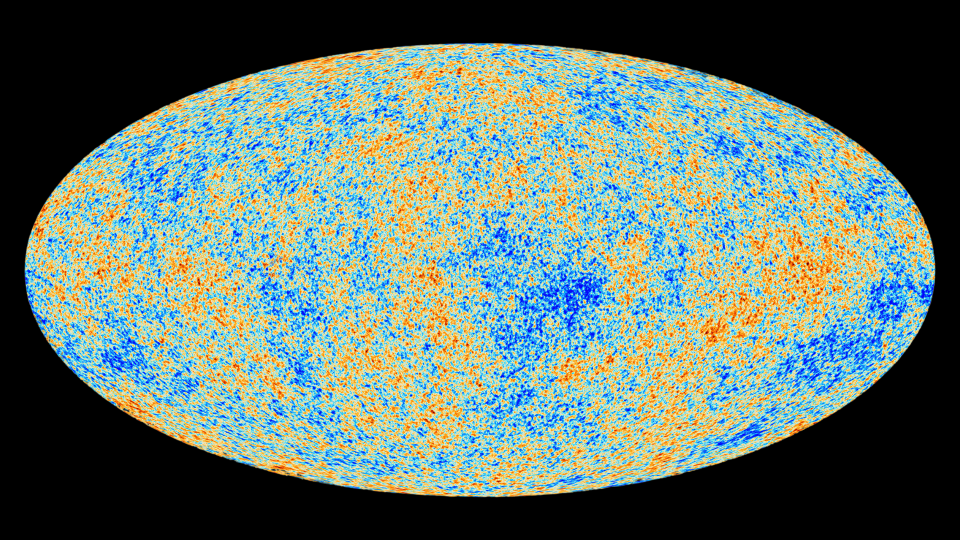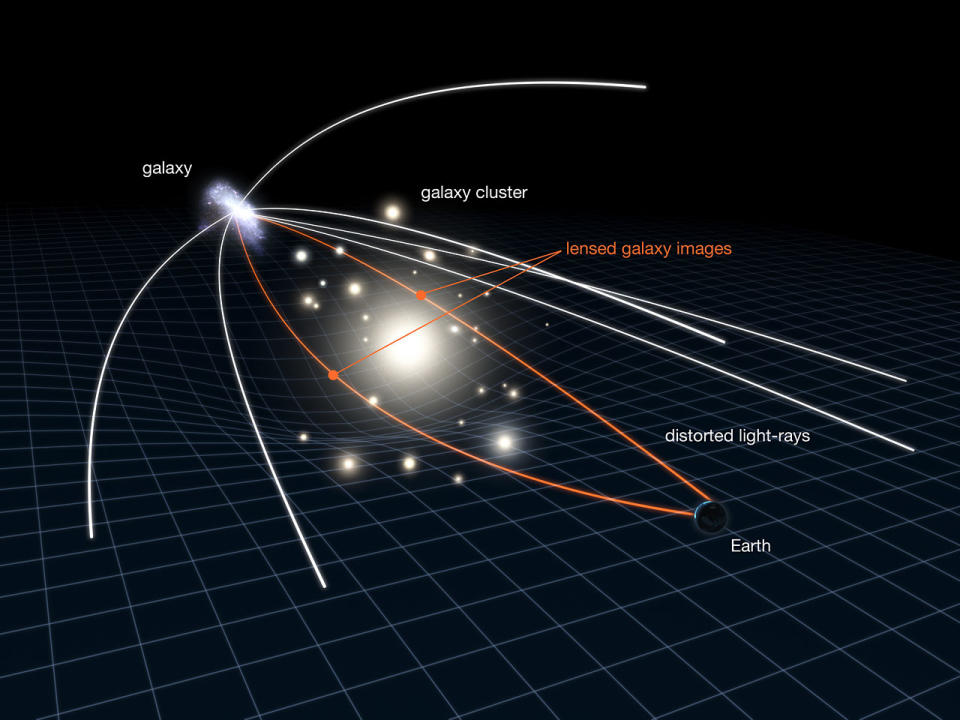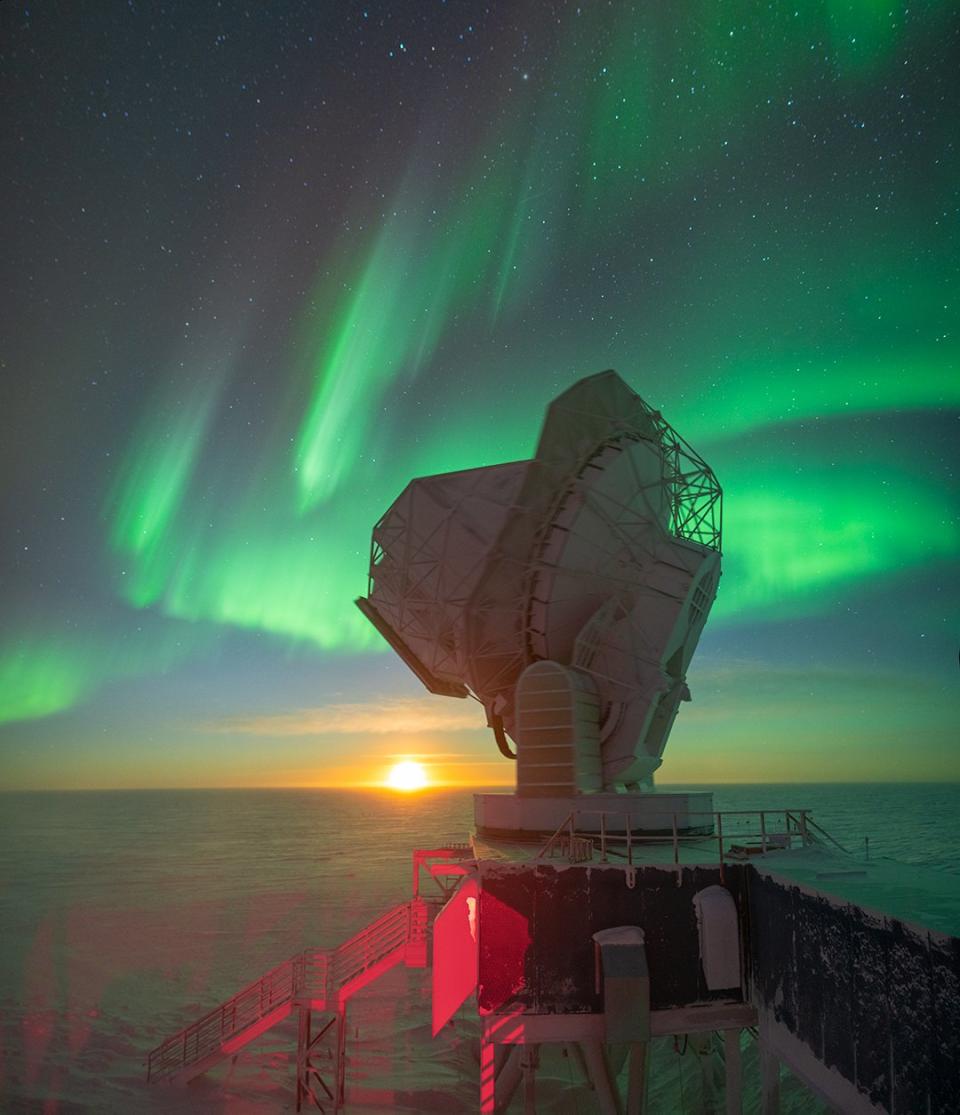Ancient cosmic light, which evenly filled the universe about 400,000 years after the Big Bang, may serve as a treasure map guiding scientists to the secrets of dark matter.
The Cosmic Microwave Background (CMB) refers to the first light that circulated freely in the universe. Its journey began after space had expanded and cooled enough to allow electrons and protons to form the first atoms; This meant that electrons were no longer endlessly scattering photons and the universe instantly went from opaque to transparent.
The CMB, or “final scattering surface” as it is sometimes known, was captured by a new and upgraded camera called SPT-3G. SPT-3G is located at the South Pole Telescope and, after five years of operations, has managed to capture this phenomenon with these first data that point to exciting developments to come.
“The CMB is a treasure map for cosmologists,” Zhaodi Pan, the study’s lead author and a scientist at Argonne National Laboratory, said in a statement. “Very small changes in temperature and polarization provide a unique window into the infancy of the universe.”
Relating to: How will the Large Hadron Collider’s successor hunt for the dark universe?
But as any pirate will tell you, all good treasure maps need a key to read. In the case of this cosmic treasure map, the distribution of dark matter only emerges in light of Albert Einstein’s 1915 theory of gravity: general relativity.

Reading the cosmic map with Einstein
Astronomers believe that entire galaxies are surrounded by massive halos of dark matter; In fact, this mysterious form of matter is so ubiquitous that it accounts for 68% of all matter in the universe.
But dark matter does not interact with light because it is not composed of atoms made up of electrons, protons, and neutrons, collectively known as baryons. But dark matter has mass, which means it interacts with gravity.
This is where general relativity comes into play. Einstein’s theory of gravity says that all objects with mass cause a curvature in space-time, the unified 4-dimensional entity consisting of three dimensions of space and a single dimension of time.


When light from a background source passes this mass-induced curvature in space, its path changes. For massive objects such as galaxies, the background light may be so curved that the galaxies or stars from which it comes appear to drift across the sky. In extreme cases, light passing through this intermediate object can take varying degrees of curved paths around the object, meaning that sometimes a source can appear at more than one point in the same image.
This effect is called gravitational lensing and is used to great effect by instruments such as the James Webb Space Telescope to view faint galaxies in the early universe. A more subtle version of this effect, gravitational microlensing, can be used to determine more about the lensing object (in this case, dark matter).
But to get a picture of the dark matter network in the universe, scientists need a light source that is equally cosmically widespread. This makes the CMB the ideal light for such an epic dark matter lensing probe.


In particular, SPT-3G was able to take advantage of the lack of interference caused by the South Pole Telescope’s dry, stable atmosphere and remote location. In the process, research added further evidential support to Einstein’s general relativity;
“The more we learn about the distribution of dark matter, the closer we come to understanding its nature and its role in forming the universe we live in today,” Pan said.
Although the new analysis is the result of just a few months of work in 2018, CMB lensing measurements are already competitive in the field.
“One of the really exciting parts of this work is that the result comes from essentially deploying data from when we were just starting observations with SPT-3G — and the result is already amazing,” said study author and physicist Amy Bender. Argonne said in its statement: “We have another five years of data that we’re trying to analyze right now, which is a hint of what’s to come.”
Related Stories:
— Huge galaxy without dark matter is a cosmic puzzle
— Researchers dig deep underground in hopes of finally observing dark matter
— Euclid ‘dark universe’ telescope captures first full-colour images of the universe (images)
Even using a dedicated computer cluster at the Argonne Laboratory Computing Resource Center, analyzing months of data from the SPT-3G camera is years of painstaking work.
Future results from the camera could help scientists solve another long-standing cosmic mystery: the nature of dark energy, the unknown force driving the accelerating expansion of the universe.
“Every time we add more data, we find more things we don’t understand,” Bender concluded. “As you peel back the layers of this onion, you learn more and more about your instrument and also about your scientific measurements of the sky.”
The first results of the SPT-3G camera were published last year in the journal Physical Review D.